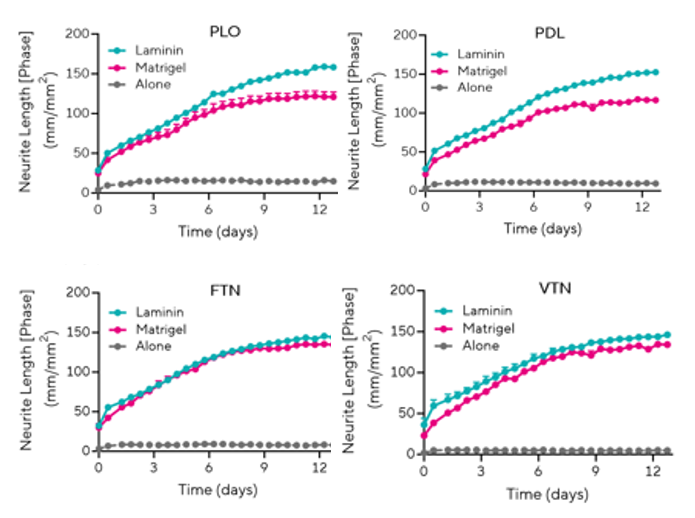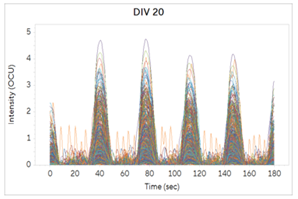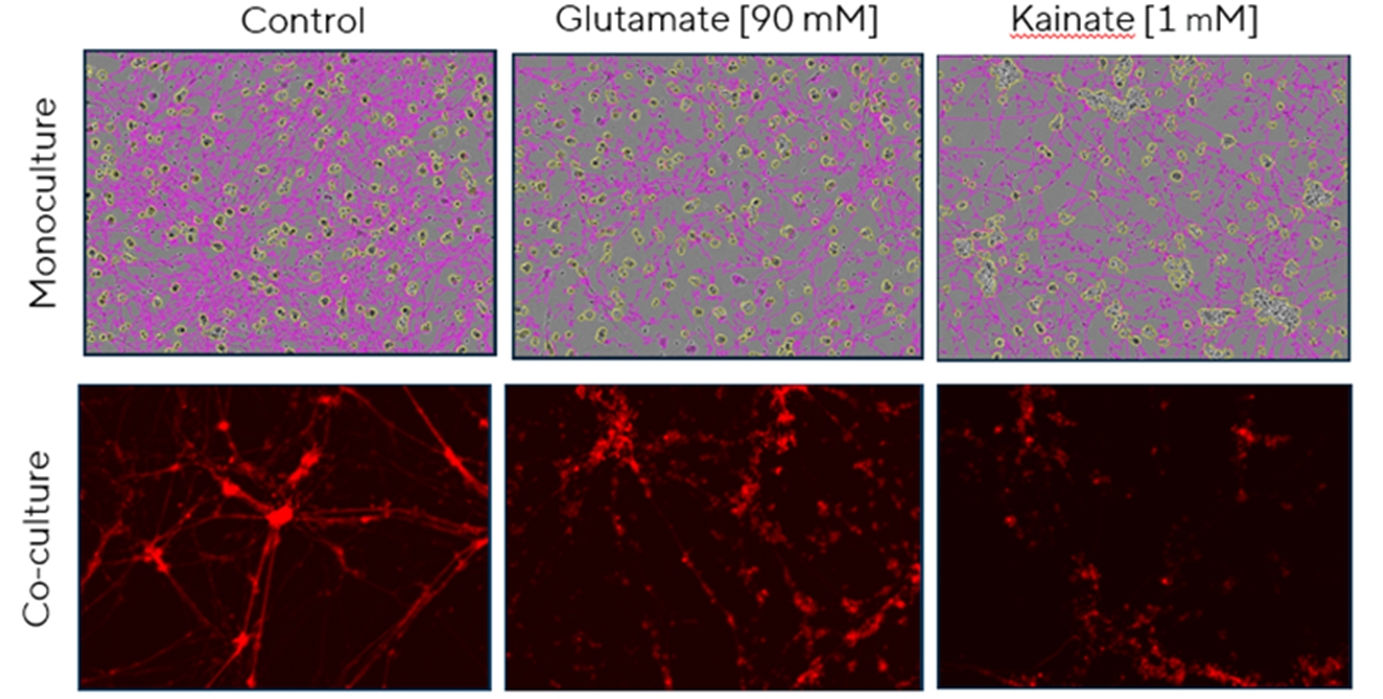Matrigel Alternatives for Neuronal Assays
02/14/25
Neuronal Outgrowth Models
Neurological conditions are the leading cause of illness and disability worldwide, affecting more than 3 billion people. In vitro models may be used to study these neurological conditions; however, many available components may include xeno-contaminants, which can affect cellular behavior or cause iPSCs to differentiate into other lineages, leading to inaccurate results.
High-purity, xeno-free reagents from Advanced BioMatrix may be utilized to more accurately investigate neuronal dynamics in conditions that more closely resemble physiological environments.
Read the full white paper here.

Dual Coating Models for Neuronal Activity
In vitro models may be used to study spontaneous neuronal activity (SNA) by culturing iPSCs under xeno-free materials that best replicate the physiological environment.
Advanced BioMatrix’s (ABM) high purity, xeno-free reagents effectively support functional neuronal activity assays that provide a good understanding of neuronal function, response to their environment, and connectivity with other cells. The SNA of iPSC-derived neurons and astrocytes were assessed using ABM’s xeno-free dual coatings, and extracellular matrix combined with Laminin 511.

Neurotoxicity Assays
Current methods for culturing iPSCs are hindered by components that may contain traces of xeno contaminants that affect cell behavior, lead to inaccurate results, raise immunological concerns, and limit their use in translational applications.
In vitro models using Advanced BioMatrix’s (ABM) xeno-free materials may be used to study neuronal behavior by culturing iPSCs under conditions that best replicate their physiological environment.
ABM’s high purity, xeno-free reagents effectively support neuronal excitotoxicity assays that ensure the retention of cellular behavior. The excitotoxic response of iPSC-derived neurons and astrocytes were assessed using ABM’s xeno-free dual coating consisting of Poly-D-Lysine and Laminin 511.




